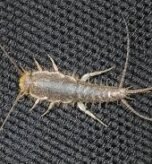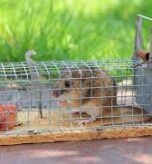Introduction: Unveiling the Magic of Ladybugs
Ladybugs, widely recognised for their charming appearance, are in fact nature’s indispensable pest controllers, playing a crucial role in maintaining garden health. This guide explores their unique biological characteristics, historical significance, and practical benefits, offering professional insights into how their presence can be effectively fostered for sustainable garden management.
Understanding Ladybugs: More Than Common Insects
Despite their common appellation, these insects are precisely classified as beetles (Coleoptera), distinguishing them from “true bugs” (Hemiptera). As beetles, they undergo complete metamorphosis and possess hardened forewings (elytra). Their characteristic oval, domed bodies and vibrant colours serve as aposematic (warning) colouration, signalling their distasteful or toxic nature to potential predators. Globally, there are over 4,500 identified ladybug species, with more than 500 found in the United States alone.
The Complete Life Cycle of a Ladybug
Ladybugs undergo a four-stage complete metamorphosis: egg, larva, pupa, and adult.
Developmental Stages
The cycle begins with tiny, spindle-shaped eggs, laid in clusters on leaf undersides near aphid colonies. A female can lay over 1,000 eggs, some infertile “trophic eggs” for newly hatched larvae if prey is scarce. Eggs hatch in 2-10 days.
Larvae are elongated, often “alligator-shaped,” and are voracious predators, consuming 350-400 aphids in two weeks, plus other soft-bodied pests. They pass through four instars before pupating.
The pupa stage is immobile, lasting 7-15 days, during which the larva transforms into the adult.
Adult ladybugs emerge with soft exoskeletons that harden and darken. They can live for up to one year and mate soon after becoming active in spring.
Ladybugs as Natural Pest Control Agents
Ladybugs are highly valued for their role as biological control agents, primarily preying on aphids. Both larval and adult stages are effective, with a single adult consuming up to 50 aphids daily. Their diet extends to other garden pests, including mealybugs, spider mites, and insect eggs.
Recent Cornell research highlights a “sixth appetite” for sterols, essential nutrients lacking in aphids. Ladybugs supplement their diet with sterol-rich leafy greens, crucial for male reproduction and offspring viability. Non-prey foods such as pollen, nectar, and honeydew also support fertility, migration, and survival during periods of prey scarcity.
Strategies for Attracting and Retaining Ladybugs
Fostering a ladybug-friendly garden involves a multi-faceted approach.
Plant Selection and Hydration
Strategic planting of species rich in pollen and nectar, such as dill, yarrow, and marigolds, provides both food and shelter. Ladybugs require fresh water, which can be provided via damp paper towels or misting plants, avoiding open water dishes where they might drown.
Chemical Avoidance and Habitat Creation
Eliminating chemical pesticides is paramount, as residues are lethal to ladybugs. A healthy, pesticide-free garden naturally encourages beneficial insect populations. Additionally, creating overwintering habitats by leaving dead leaves, logs, or establishing dark, quiet spaces provides essential shelter. Decoy plants can also divert aphids from main crops for ladybug predation.
Managing Ladybugs: Release and Indoor Care
Releasing Purchased Ladybugs
When releasing ladybugs for biological control, choose early morning or late afternoon during calm, humid conditions to minimise immediate dispersal. Mist plants with water and place ladybugs at the base of aphid-infested areas. Releasing ladybug larvae is often more effective as they are flightless and highly voracious. While adult ladybugs may initially disperse, they may return if aphid populations are abundant.
Indoor Ladybugs and Coexistence
Ladybugs frequently enter homes in autumn to hibernate in warm, sheltered cracks. They are generally harmless indoors, though the invasive Asian lady beetle (Harmonia axyridis) can be a nuisance. For temporary indoor care, a plastic container with ventilation, natural materials, and a damp water source is suitable. Hibernating ladybugs do not require food until spring, but water sources should be kept clean. For their long-term well-being, ladybugs should be released outdoors within a week or when warm weather returns.
Key Distinctions and Ecological Considerations
It is important to differentiate between native and invasive ladybug species, such as the Asian lady beetle (Harmonia axyridis), which can outcompete and prey on native populations. Ladybugs possess effective defence mechanisms, including bright warning colours and the ability to exude distasteful, toxic fluids (haemolymph) when threatened, or to “play dead”. Cannibalism and intraguild predation are also documented behaviours, particularly in invasive species when food is scarce. Culturally, ladybugs are often associated with luck and divine intervention, rooted in historical folklore as “Our Lady’s birds”.
Conclusion: Embracing Our Spotted Allies
Ladybugs are unequivocally valuable and environmentally friendly pest controllers, significantly reducing reliance on chemical pesticides. By implementing proactive strategies to attract and sustain their populations, individuals can cultivate healthier, more balanced garden ecosystems. Appreciating these insects for their ecological significance, beyond their charming appearance, is crucial for fostering sustainable natural environments.



